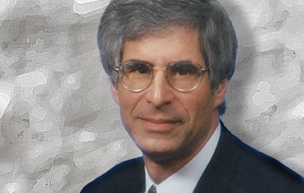It’s an ironic bookend to history that our first Republican president, Abraham Lincoln, began the practice of hallowing military cemeteries, while our last one, Donald Trump, has introduced the practice of desecrating them.
On Nov. 19, 1863, Lincoln delivered his famous Gettysburg Address. Though only lasting two minutes, it was perhaps the most powerful and inspiring oration in American history,
The occasion was the dedication of a cemetery for the interment of Union soldiers who died at the Battle of Gettysburg in Pennsylvania. Over 3,500 were laid to rest there. The fierce three-day battle in July 1863, the bloodiest of the Civil War, cost both sides over 50,000 casualties.
Lincoln desperately wanted to give meaning to the terrible sacrifices of the combatants. So he brilliantly changed the war’s narrative. Until then, it had been about quelling a rebellion and preserving the Union, but, through the vivid imagery of his speech, it became a struggle for a “new birth of freedom,” namely, the abolition of slavery.
The words of Lincoln’s speech, which used to be taught to every school child (including myself), still bring tears to one’s eyes:
“We cannot dedicate—we cannot consecrate—we can not hallow—this ground. The brave men, living and dead, who struggled here, have consecrated it, far above our poor power to add or detract. …. It is for us the living, rather, to be dedicated here to the unfinished work which they who fought here have thus far so nobly advanced. It is rather for us to be here dedicated to the great task remaining before us—that from these honored dead we take increased devotion to that cause for which they gave the last full measure of devotion—that we here highly resolve that these dead shall not have died in vain—that this nation, under God, shall have a new birth of freedom—and that government of the people, by the people, for the people, shall not perish from the earth.”
Today, over 6,000 U.S. soldiers are buried at the Gettysburg Cemetery, including those who died in the Spanish-American War and World War I. It is part of Gettysburg National Military Park, a shrine, which, like the battleship USS Arizona, the 9/11 Memorial, and Arlington National Cemetery, is hallowed ground. It’s impossible to approach these places without experiencing a sense of quiet reverence.
Gettysburg is quite small compared to Arlington National Cemetery, the country’s largest military burial ground, the final resting place of over 400,000 service members.
Arlington, too, has its roots in the Civil War. It sits on land that was once the estate of Gen. Robert E. Lee, the Confederacy’s most famous military leader. It was purchased by the federal government in 1864, and the first soldier was buried there May 13, 1864. On May 30, 1929, it was the site of the first national Memorial Day Cemetery.
Over 400 Medal-of-Honor recipients lie at Arlington, as do President John Kennedy, World War I Gen. John J. Pershing, and the three astronauts of the NASA Apollo 1 mission who died in an accidental fire in 1967. The cemetery also contains the Tomb of the Unknown Soldier, a monument dedicated to deceased U.S. service members whose remains have not been identified.
For these reasons and many more, Arlington is indeed a hallowed place. At least it was, until former President Trump arrived Aug. 26.
Trump, who has no respect for any rule, tradition or convention, did what he usually does — turned the sacred into the profane. In effect, he employed the cemetery as a campaign prop.
No, he didn’t take selfies. But his campaign staff took a video and photographs of him laying a wreath to “honor” the 13 U.S. service members who were killed at Kabul Airport during America’s chaotic withdrawal from Afghanistan.
In the process, Trump’s staff got into a confrontation with a cemetery employee who tried to stop them from filming, since federal law prohibits photography at Arlington National Cemetery “for partisan, political or fundraising purposes.”
True, Trump had been invited to the ceremony by the families of three service members who were killed at Kabul Airport. But his campaign’s video and photos of the ceremony were promptly posted on Trump’s TikTok account. They included one of him giving his signature “thumbs up” gesture with the names of military members visible on nearby headstones.
It doesn’t take a genius to figure out that Trump, who has expressed contempt for soldiers that die in battle (calling them “losers”), was not there to honor the dead or comfort the bereaved. This was purely a campaign stop.
I hesitate to even mention Trump in the same breath as Lincoln. Lincoln has been enshrined in history as the “Great Emancipator.” Trump deserves to be remembered as the “Great Imposter.”
Elliott Epstein is a trial lawyer with Shukie & Segovias in Lewiston. His Rearview Mirror column, which has appeared in the Sun Journal for 17 years, analyzes current events in an historical context. He is also the author of “Lucifer’s Child,” a book about the notorious 1984 child murder of Angela Palmer. He may be contacted at epsteinel@yahoo.com
Send questions/comments to the editors.



We invite you to add your comments. We encourage a thoughtful exchange of ideas and information on this website. By joining the conversation, you are agreeing to our commenting policy and terms of use. More information is found on our FAQs. You can modify your screen name here.
Comments are managed by our staff during regular business hours Monday through Friday as well as limited hours on Saturday and Sunday. Comments held for moderation outside of those hours may take longer to approve.
Join the Conversation
Please sign into your Sun Journal account to participate in conversations below. If you do not have an account, you can register or subscribe. Questions? Please see our FAQs.